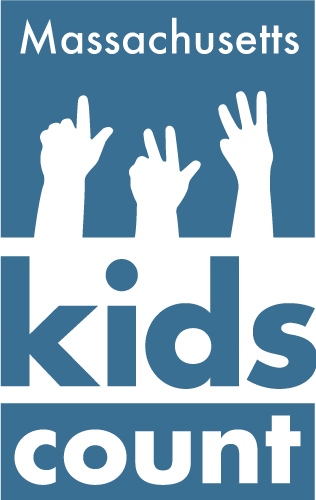The “Fair Share” ballot question that Massachusetts voters approved in 2022 is responsible for important new public investments that advance racial and economic justice. Our Massachusetts state budget is a critical tool for advancing equity. Revenue from the new tax, which is levied on those with incomes over one million dollars, is included in this year’s (Fiscal Year 2024) state budget. As required by law, this revenue is invested solely in education and transportation. The first year of investments made with Fair Share dollars demonstrate how this new surtax creates opportunities to mitigate the ongoing harms of structural racism while improving the Commonwealth as a whole.
MassBudget recognizes that every line item in the state budget is an opportunity to advance racial equity.1 The investments highlighted here illustrate some ways in which the Fair Share Amendment will help address racial inequities through public investments that provide disproportionate benefits for Massachusetts residents of color. For instance, residents of color may be more likely to receive a program’s services due to disparate needs created by structural racism and economic inequality. Furthermore, a program might stipulate that spending should aim to reduce racial inequalities, though none of the Fair Share line items in the current budget do so.
The Fair Share Amendment
The Fair Share Amendment (FSA) was approved by voters through ballot initiative and amended the state constitution to introduce a 4 percent surtax only on taxable income over $1 million. The $1 million threshold is adjusted annually to reflect increases in the cost of living to ensure that the surtax applies only to the Commonwealth’s highest income taxpayers. Our state constitution requires Fair Share money to be spent only on transportation and public education. A comprehensive list of the items funded with Fair Share dollars in the current budget is found in MassBudget’s report, “Your Fair Share Dollars at Work: Critical Investments and Hard Choices.”
This is not an exhaustive list of antiracist policies funded by the Commonwealth, or even of those funded by the Fair Share surtax. Other initiatives funded by Fair Share or included elsewhere in the budget are also opportunities to close racial gaps. The impact of state spending on racial and economic equity will also depend on how programs are implemented. Tracking the implementation and impact of policies should be improved by directions in the recently enacted Fiscal Year (FY) 2024 budget requiring the Commonwealth to improve data collection on policy outcomes by race.2
Child Care
Fair Share dollars spent on early education and care in FY 2024 will advance racial equity by supporting child care subsidy programs that disproportionately serve children of color. Access to high-quality child care allows children to receive critical developmental supports in their early years and allows parents to participate in the workforce. Massachusetts residents of color are more likely than white residents to experience poverty and therefore more likely to be eligible for child care financial assistance (CCFA).3 In 2022, the poverty rates for Black children and Latinx children in Massachusetts were each over 3 times the poverty rate of non-Latinx white children.4 Largely as a result, children of color are overrepresented among children eligible for Department of Transitional Assistance (DTA) vouchers and among Department of Children and Families (DCF) consumers.5 For example, non-Latinx Black children make up 9 percent of the Commonwealth’s population,6 but this group represents 17 percent of children eligible for Income Eligible Child Care (IE) and DTA vouchers7 and 13 percent of children under the care of DCF.8
Fair Share dollars will disproportionately support children of color by reducing the waitlist and increasing the reimbursement rate for child care subsidy programs. The legislature appropriated $25 million to support efforts to reduce the waitlist for families who are eligible for subsidies based on income.9 Due to administrative capacity constraints and limited funding, income-eligible families are often placed on a waitlist until care becomes available. Another $25 million of Fair Share revenue will be used to increase the rate at which programs are reimbursed for providing care to a child receiving a subsidy.10 Reimbursement rate increases improve providers’ ability to offer quality care to the vulnerable children that they serve – again, disproportionately providing benefits to children of color.
Higher Education
Fair Share dollars spent on making public higher education more affordable will improve educational access for students of color because they are more likely than white students to attend Massachusetts’ public colleges and universities instead of private institutions. While people of color make up about a third of the Commonwealth’s population, about half of students at Massachusetts public colleges and universities are students of color. Access to higher education is important, as decades of research has shown that economic measures such as future income and earnings and employment rates all rise significantly along with education level.11 Of nearly $234 million in new Fair Share investments in higher education in FY 2024, nearly $160 million is focused on providing scholarships, grants, and other affordability measures that can increase access and improve chances for student success in public higher education.
Several of these new scholarship investments provide broad-based support to students across public higher education. This includes $84 million to expand the Commonwealth’s main scholarship program12 and $20 million for MassReconnect,13 which focuses on covering tuition, fees, and supplies, for community college students aged 25 and over. Additionally, the FY 2024 budget has $12 million to support broader implementation of free community college in the years ahead.
Further study is necessary to determine to what degree other targeted grants supported with Fair Share surtax revenue support people of color, including grants for nursing students in community college14 and for students in areas of study that are in high-demand15 in the Massachusetts economy.
Transportation
Access to transportation plays a big role in access to opportunity, especially for communities of color. Investments from the Fair Share surtax are already making a difference by improving connections to jobs, making travel less time-consuming, and ensuring that travel is more reliable and safe. Many of these investments will disproportionately benefit communities of color and in other cases the distribution of benefits will depend on how policies get implemented.
The transportation investments that will most clearly advance equity in the Commonwealth are those supporting buses, rail, and other public transportation. As a result of Fair Share, the legislature invested $90 million to support the operation of Massachusetts’ 15 Regional Transit Administrations (RTAs) that operate outside of the Boston area.16 Bus service that has not operated at night or on weekends is beginning to expand to a wider array of times. People of color typically comprise a disproportionate share of riders in these regions. For instance, about half of RTA riders are white on service in the towns around Worcester, Lawrence, and the New Bedford/ Fall River regions, despite predominantly white populations in these broader service areas.
Similarly, revenue from Fair Share will be used to support the Massachusetts Bay Transportation Authority (MBTA), including: $180.8 million for durable capital investments to improve safety, access and reliability; $20 million for a workforce safety fund; $5.7 million for ferries and other water transportation; and $5 million towards initial development of systems of discounted low-income fares that will eventually benefit riders of color disproportionately.17 Fifty-eight percent of riders on New England’s largest public transit system identify as what the Federal Transit Administration refers to as “a minority.”
The remaining $175 million of Fair Share transportation investments will support road and bridge improvements. Depending on which improvements receive these investments they could provide major relief to communities of color. There’s some indication, for instance, that structurally deficient bridges are more likely to be located near communities of color.
Steps in the Right Direction
The items highlighted here illustrate some ways in which the Fair Share Amendment will help address racial inequities brought about by centuries of policy decisions. Every line item in the state budget represents an opportunity to advance racial equity, and analysis of the on-the-ground impact of spending will also require examining how programs are implemented. Recent changes to the way state government collects demographic data,18 coupled with a commitment from the Administration to conduct equity audits of state agencies,19 can help make this task easier. Paying closer attention to the racial impact of future investments, both through Fair Share and other parts of the budget, can help steer us toward policies that better advance racial equity. The health and well-being of our neighbors and communities depend on it.
Endnotes
1 See other examples from the FY 2024 budget here.
2 See Outside Section 7 of the FY 2024 Budget, https://malegislature.gov/Budget/FY2024/FinalBudget
3 Massachusetts families become eligible for child care financial assistance (CCFA), more commonly referred to as child care subsidies, if they either: have a household income at or below 50 percent the state median income receive benefits from the Department of Transitional Assistance (DTA)’ or have an active case with the Department of Children and Families (DCF). As of June 2023, about 59,000 children received CCFA, with the caseload now exceeding pre-pandemic levels.
4 Kids Count Data Center, Children in Poverty by Race and Ethnicity in Massachusetts, Annie E. Casey Foundation.
5 Massachusetts Department of Children and Families Annual Report, Fiscal Year 2022, Table 7.
6 Kids Count Data Center, Child Population by Race and Ethnicity in Massachusetts, Annie E. Casey Foundation.
7 Isaacs, et al. (2015, March). Review of Child Care Needs of Eligible Families in Massachusetts. Retrieved from https://www.urban.org/sites/default/files/publication/45351/2000160-review-of-child-care-needs.pdf
8 Massachusetts Department of Children and Families Annual Report, Fiscal Year 2022, Table 7.
9 Line item 1596-2411, Income Eligible Waitlist.
10 Line item 1596-2434, Early Education and Care Reimbursement Rate Increase. The reimbursement rate was last increased in November 2022 as a result of $60,000,000 appropriated in the FY 2023 budget for the same purpose. Even with the most recent increase, reimbursement rates, on average, remain well below the rates that private pay providers receive. See Department of Early Education and Care Board Meeting Slides, November 2022.
11 Jennifer, M., & Matea, P. (2023). Education Pays 2023. The Benefits of Higher Education for Individuals and Society. College Board. pgs. 17, 29, 37, 39, 41. a href=”https://research.collegeboard.org/media/pdf/education-pays-2023.pdf”>https://research.collegeboard.org/media/pdf/education-pays-2023.pdf
12 Line item 1596-2414, Financial Aid Expansion
13 Line item 1596-2418, MassReconnect
14 Line item 1596-2433, Nursing Programs Free Community College
15 Line item 1596-2423, Targeted In-Demand Scholarships
16 Line item 1596-2406 Regional Transit Funding and Grants
17 Line items: 1596-2404 MBTA Capital Investments, 1596-2427 MBTA Workforce and Safety Reserve, 1596-2408 Water Transportation, and 1596-2405 MBTA Means Tested Fares
18 See Outside Section 7 of the FY 2024 Budget, https://malegislature.gov/Budget/FY2024/FinalBudget
19 https://www.wbur.org/news/2023/01/12/massachusetts-maura-healey-equity-audit





